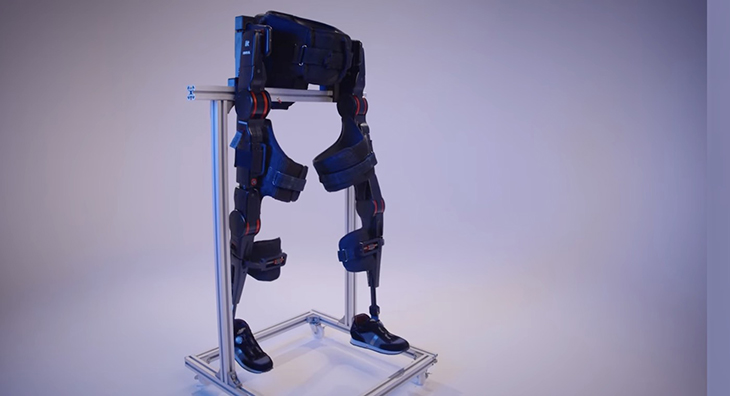
Italy has introduced a groundbreaking robotic exoskeleton promising to revolutionize the lives and mobility of individuals with disabilities or injuries.
This innovative technology, named the ‘Twin,’ is engineered to enhance user autonomy and adaptability in a creative manner.
Developed as a collaborative effort between the Italian Institute of Technology and the National Insurance Institute of Workplace Injuries, the Twin exoskeleton was unveiled during a press conference at the Museum of Science and Technology in Milan. The unveiling showcased the culmination of extensive research and development aimed at addressing the diverse needs of individuals with mobility impairments.
Central to the Twin’s design are its versatile controls, offering three distinct modes tailored to the wearer’s level of leg function. These modes, Walk mode, Retrain mode, and TwinCare mode, enable users to navigate mobility challenges with ease and precision.
Walk mode caters to individuals paralyzed from the waist down, facilitating leg movement through adjustable gait and walk speeds. This mode harnesses battery-powered motors embedded within the exoskeleton’s knee and hip joints to execute fluid and natural motion.
Retrain mode is tailored for users with partial leg functionality, providing assistance to enhance strength and mobility. The exoskeleton’s intuitive design delivers support in response to user-initiated movements, akin to the electric pedal assistance found in electric bicycles. This feature facilitates rehabilitation and promotes gradual improvement in leg functionality over time.
The advanced TwinCare mode is engineered to aid individual with injuries affecting only one leg. Utilizing sophisticated software integrated into an Android tablet, this mode synchronizes the movement and gait of exoskeleton with that of the user’s functional leg. By ensuring symmetry and balance in movement, TwinCare mode facilitates seamless mobility and reduces strain on the injured limb.
Developed over several years since 2013, the Twin boasts a robust battery life of approximately four hours, providing sustained support throughout daily activities.
Crafted from lightweight aluminum alloy modules, the exoskeleton offers portability and ease of transport, with components easily disassembled for storage or upgrades.
While the Twin remains in the prototype phase, requiring the use of crutches to maintain balance, its emergence signifies a major leap forward in assistive technology for individuals with mobility impairments.
See more on this incredible invention in the video below:



